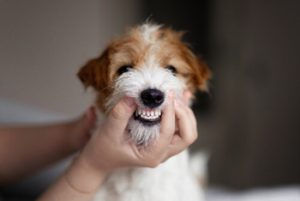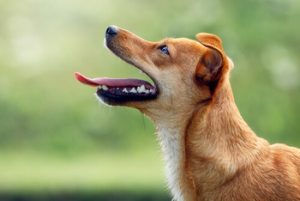Finding that your dog has a loose tooth can be quite a shock, especially if you’ve never dealt with dental problems in pets before. You might be tempted to think of it the same way you would for human children losing their baby teeth, but dogs’ dental health is different. Whether it’s a puppy or an adult dog, the causes and appropriate responses can vary greatly.
In this article, we will explore why dogs get loose teeth, when it is a natural process, when it signals trouble, and why pulling out the tooth yourself is rarely a good idea. We will also cover proper dental care for dogs to prevent tooth loss in the future.
Understanding Loose Teeth in Dogs
A loose tooth in a dog can mean very different things depending on its age and dental health. For puppies, loose teeth are often part of a natural process as baby teeth (deciduous teeth) make way for adult teeth. In adult dogs, however, loose teeth usually point to underlying dental problems.
Puppies and Baby Teeth
Puppies are born without teeth, and their baby teeth start to emerge at around three weeks old. By six to eight weeks, most puppies have a full set of deciduous teeth. These baby teeth are meant to fall out between four and six months of age to be replaced by permanent adult teeth.
This process is similar to how human children lose their baby teeth, but it happens much faster. If your puppy has a loose tooth during this stage, it’s typically normal. You’ll often find small teeth in their water bowl, chew toys, or on the floor.
Adult Dogs and Loose Teeth
In adult dogs, loose teeth are not normal and should always be taken seriously. Common causes include:
- Periodontal disease – This is the most common reason dogs lose teeth. Caused by plaque buildup, dental tartar, and infection along the gum line, periodontal disease damages the tissues and bone that hold teeth in place.
- Trauma – A blow to the mouth, chewing on hard objects, or accidents can loosen a tooth.
- Oral tumors – Growths in the mouth can displace teeth and damage surrounding tissues.
- Root damage – Infection or injury to the tooth roots can destabilize teeth.
If your adult dog has a loose tooth, it is important to have it checked by a veterinarian rather than attempting to pull it out yourself.
Why Pulling Out a Loose Tooth Yourself Is a Bad Idea
Even if the tooth looks ready to come out, attempting to pull it on your own can cause significant harm. Here’s why:
Risk of Pain and Stress
Dogs cannot understand what you are trying to do. Pulling a tooth without anesthesia can cause extreme pain, fear, and stress. Even if the tooth is loose, its roots may still be attached, and pulling it prematurely can tear tissues.
Infection Risk
The mouth contains a lot of bacteria. Removing a tooth improperly can introduce infection into the gums, tooth roots, or even the bloodstream, leading to serious complications.
Damage to Surrounding Teeth and Gums
A loose tooth may be connected to underlying dental structures that are still healthy. Pulling it out can harm nearby teeth and cause unnecessary damage.
Underlying Dental Disease
Loose teeth in adult dogs are often a symptom of advanced periodontal disease. Simply removing the tooth doesn’t address the root cause, and the problem will likely continue to affect other teeth.
The Right Way to Handle a Loose Tooth
If you notice a loose tooth in your dog’s mouth, the safest step is to arrange a veterinary check-up as soon as possible. The veterinarian can determine whether it is part of a natural process (in puppies) or a sign of dental disease (in adults).
Veterinary Examination
A vet will perform a thorough oral examination and may recommend dental x-rays to assess the health of the tooth roots and surrounding bone.
If dental disease is present, your vet may recommend a professional dental cleaning under general anesthesia to remove tartar and address infection before deciding whether extraction is necessary.
Professional Extraction
When extraction is needed, it should be done by a veterinarian or veterinary dentist. The procedure involves:
- Administering general anesthesia for pain-free treatment
- Cleaning and disinfecting the area
- Carefully removing the tooth without damaging surrounding tissues
- Prescribing pain relief and antibiotics if needed
This approach ensures your dog’s comfort, reduces the risk of infection, and addresses any other dental problems at the same time.
How to Care for Your Dog’s Teeth and Prevent Loose Teeth
Loose teeth in adult dogs are often preventable with good dental care. Here are some key ways to keep your dog’s teeth and gums healthy:
Daily Brushing
Regular tooth brushing is the gold standard for preventing plaque buildup. Use a toothbrush designed for pets and veterinary-approved toothpaste. Start slowly and make it a positive experience with praise and treats.
Veterinary-Approved Dental Products
The Veterinary Oral Health Council (VOHC) provides a list of products proven to reduce plaque and tartar. These include special dental chews, water additives, and dental diets.
Chew Toys
Safe chew toys can help scrape away plaque and massage the gums. Avoid hard objects like bones, antlers, or rocks, which can fracture teeth.
Regular Dental Check-Ups
Annual veterinary check-ups are essential for early detection of dental issues. Some dogs, especially small breeds or those prone to dental disease, may need professional cleanings more frequently.
Signs of Dental Problems in Dogs
Early signs of dental disease can be subtle. Watch for the following and schedule a vet visit if you notice them:
- Bad breath
- Drooling more than usual
- Difficulty eating or chewing
- Pawing at the mouth
- Bleeding along the gum line
- Visible tartar buildup
- Loose teeth or tooth loss
- Swelling around the mouth
Catching these signs early can prevent painful complications and tooth loss.
What Happens If a Loose Tooth Is Left Untreated?
Ignoring a loose tooth can lead to more serious health problems. If the cause is periodontal disease, the infection can spread to other teeth and into the bloodstream, potentially affecting the heart, liver, and kidneys.
In puppies, a baby tooth that doesn’t fall out on its own can cause crowding and misalignment of adult teeth. This may require veterinary intervention to remove the retained tooth.
Special Considerations for Puppies
While loose teeth in puppies are normal, they should still be monitored. Sometimes a baby tooth doesn’t fall out when the adult tooth comes in. This condition, called a retained deciduous tooth, can trap food and bacteria, increasing the risk of dental disease.
If you notice your puppy has both a baby tooth and an adult tooth in the same spot, consult your vet. The baby tooth may need to be removed.
Helping Your Dog Heal After Tooth Extraction
If your dog undergoes a tooth extraction, proper aftercare will help ensure a smooth recovery:
- Feed soft food for a few days
- Avoid giving hard chew toys until healed
- Administer any prescribed medications as directed
- Keep up with regular tooth brushing once your vet approves
Your dog may experience mild mouth pain or reduced appetite for a short time after the procedure, but most dogs recover quickly and feel happier without the discomfort of a diseased tooth.
Final Thoughts – The Best Approach to a Loose Tooth in Dogs
If you are wondering, “My dog has a loose tooth, should I pull it out?” the safest and most responsible answer is no. Whether your dog is a puppy losing baby teeth or an adult with a dental problem, pulling the tooth yourself can cause unnecessary pain, infection, and complications.
Instead, focus on providing good dental care at home, scheduling regular check-ups, and seeking veterinary care promptly if you notice a loose tooth. This approach will not only prevent tooth loss but also keep your dog’s teeth and gums healthy for years to come.
References:
https://www.pdsa.org.uk/pet-help-and-advice/pet-health-hub/symptoms/wobbly-teeth-in-dogs
https://www.petco.com/content/content-hub/home/questions/00/1/148821.html
https://www.thesprucepets.com/my-dog-has-a-loose-tooth-3384929
akc.org/expert-advice/health/dog-loose-tooth/


